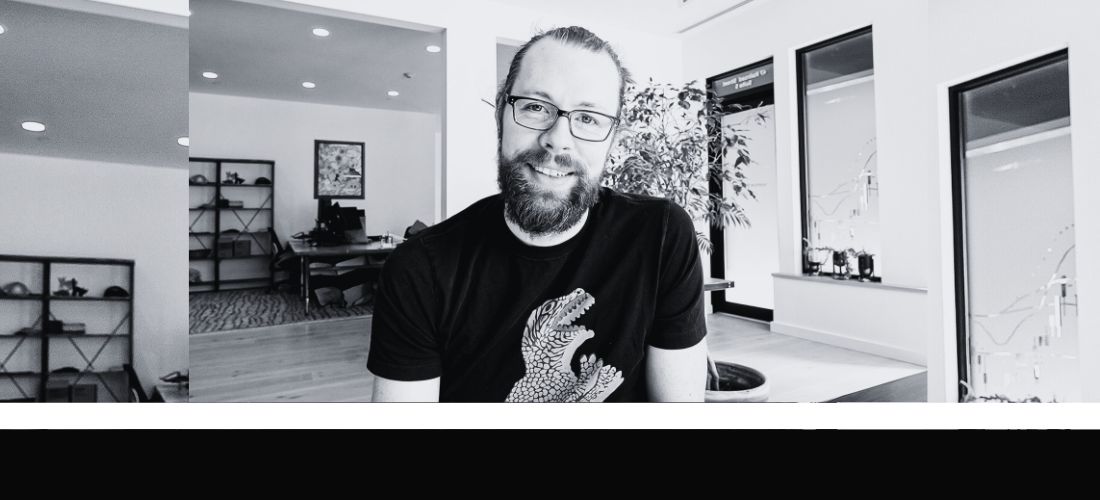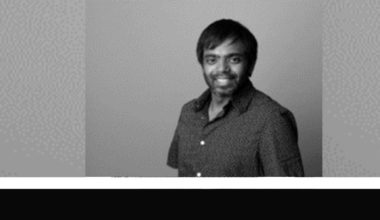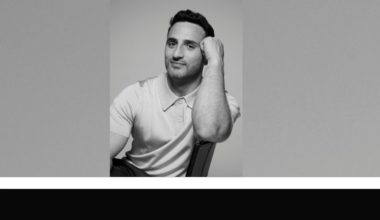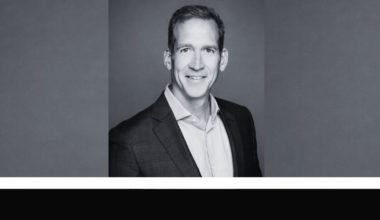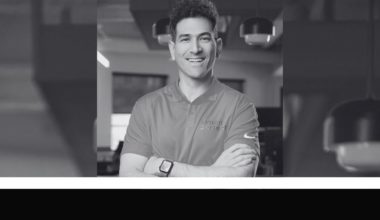Ross Cameron is a day trader and founder of Warrior Trading. He’s best known for turning a $583.15 trading account into over $10 million in audited and verified trading profits. He also hosts a YouTube channel for day trading with over 1 million subscribers.
Ross is a native Vermonter who earned his Bachelor of Arts Degree from Vermont College in 2009. Today he lives in Berkshire County, MA, with his wife and sons. When he’s not trading or working on projects for Warrior Trading, he’s fixing up old cars, making homemade maple syrup, and growing his own fruit, vegetables and berries. Ross’s favorite car is a 1961 Volkswagen bus that he drives during the summer.
Tell us a little bit about your background and how you started your company.
My interest in the stock market began around the age of 12 or 13. I became aware of the story of a great great uncle who made a fortune in the market. During middle school, we had a semester on the stock market where we partnered up and began investing with a pretend portfolio. Inspired, I called my local Edward Jones office and asked if I could buy $100 of stock in the American Ski Company. It was trading at about $1.00 a share at that time. They told me that wouldn’t work too well since they charged a commission of $50 to buy and $50 to sell.
On summer break between Sophomore and Junior year, I took my then life savings of $1,000, and opened an account with Ameritrade. I bought stock in Exxon Mobile (XOM), Caterpillar (CAT), and Pfizer (PHE). By the end of the summer, the account was more or less unchanged.
During that same time I had a friend who made $16k trading penny stocks.
When I graduated from college in 2009, it was right into the Great Recession. I began the process of trying to figure out how I was going to make a living. Naturally, getting a traditional job was the last thing on my mind. I tried a few different ideas, including working for an architect and design firm before funding an E*Trade account and giving trading another try.
I created Warrior Trading as a blog in 2012. My idea at the time was to begin documenting my journey of learning how to day trade. In January 2013, I created my YouTube account for Warrior Trading and uploaded my first beginner guides to day trading. In 2013 I added some affiliate and advertising revenue, and by 2014, I had so many visitors to the website I launched my first product. A day trading chat room.
Today, nearly 10 years later, we have over 5,000 members, a curriculum of educational courses, a suite of tools for day traders, and 20 team members working behind the scenes to keep everything running smoothly.
What would you say are the top 3 skills needed to be a successful entrepreneur, and why?
Even from a young age, I wanted to be a business owner. Rather than take the prescribed path, I’ve always felt I could figure things out myself. From putting together a table from Ikea to building my career. For this reason, being a business owner has always felt natural. Working a traditional 9-5 would be almost impossible. When I try to think about what attributes I have that make particularly well-suited to run my own business, one attribute is setting small but realistic goals.
- When I founded Warrior Trading, I started with a very small goal of just creating a website and producing content. I believed I could achieve that, and I did. It gave me a confidence boost and a sense of accomplishment. Then I created some affiliate relationships, as I saw my first commissions coming in, I felt another boost. Rather than looking from the bottom of a mountain all the way to the top, and struggling to piece together how I’d make the daunting trek in front of me, I keep my head down, and focus on just taking a few steps at a time. Over the course of 10+ years, my career and business have grown to something far more than I ever imagined. I believe if I had initially set the goal of getting to where I’m at today, it would have been too big, too scary, and too overwhelming. Thus, I think success requires an ability to focus on small incremental steps.
- Second, a major success for me in business has been my desire for rapid experimentation. I love putting something together, and just sending it out there to see how it runs. It can be rough, scrappy, and totally in beta mode. But this for me is about prototyping. I need to get feedback, and if that feedback is positive, now I’m really motivated to start polishing the idea. I think rapid experimentation at Warrior Trading goes hand in hand with taking small steps.
- Third, I’m not afraid of failure. I fail all the time. I make mistakes all the time. If I’m not having set backs, I’m not pushing myself hard enough. I live at the edge of my comfort zone. I settle back into my comfort zone when I need to hunker down, slow down, and get back on track. But then I quickly push myself back to the edge. This is where I experience maximum productivity and output. So if you feel that fear of failure, I’d try to set the stakes low, and start getting yourself out there more. Condition yourself to have small failures and have it really not be a big deal at all.
How do you separate yourself from your competitors?
This is an easy one. We are transparent. I’m the only person in my industry that I’m aware of that had his or her trading performance results audited by an independent auditor. Why does this matter? There is a lot of money being made in the industry of personal finance, and that naturally brings out people who will present themselves as experts just to try to get a piece of the market. For them, this isn’t a passion, it’s a quick way to make some money.
This makes it really difficult for consumers to identify who is legitimate and who is not. So what makes somebody legitimate? What makes Warrior Trading legitimate? If you are going to speak as though you are an expert on a topic, you need to qualify yourself. Why are you qualified to speak on this topic? In the case of personal finance, it should be because you have been able to follow whatever advice you’re sharing, and you can show tangible results.
I can’t tell you how many times I’ve read a competitor make an audacious, unverified, and most likely false earnings claim. And yet this happens daily in this market. When I first began uploading my trading performance to YouTube, I was showing both the green days and the red days. Without realizing it at the time, that gave me a real edge over competitors. It helped me earn trust, that I really show everything.
In January of 2017, when I funded an account with $583.15, I did it to prove that my day trading strategy works with even a tiny trading account. I knew I would want to have my performance from this challenge audited, because there would be people who would say I did the impossible. In 45 days, I turned the account into over $100k. In 2019, I crossed $1 million, in 2022 I crossed $10 million, and the account is still growing today.
The reason most of our competitors don’t have this type of performance track record, or any audit to back up any performance whatsoever, in my opinion, is because they simply can’t. There is no good reason to choose not to put up your track record. In this industry, it’s the biggest qualification you can have. I’m proud of both my performance and transparency in my personal trading. It is something I can truly hang my hat on, and it’s something that separates me from the rest.
What were the top three mistakes you made starting your business, and what did you learn from them?
The biggest mistakes I made were being too agreeable, hiring the wrong people, and not knowing when to call it quits.
When I first started Warrior Trading, I did everything myself. That worked for the first 2 years when I was just producing content on the blog and on YouTube, but once I launched my first product, I needed help. I hired friends and family. Generally, this was a great experience, and several of our first team members (I don’t like to call them employees), are still with us today.
However, I did make a mistake during this process. I’d never been a boss before, and some of the people I hired didn’t end up being a good fit for the team. But being an insecure people pleaser, I didn’t feel able to have the confrontation needed to either get them back on track or let them go. In fact, I went along with a lot of ideas they had for Warrior Trading that I really didn’t agree with. I was agreeable to a fault.
As I began to suffer the consequences of some of these decisions, I realized I needed to assert more control over the direction of the business. Naturally, this was met with some resistance from team members who had become comfortable running the ship. This began a tumultuous period of transition in the business. It took about 4 years to fully get the business back on a good track. That was a lot of time spent unwinding bad ideas and building a high-performing team.
I now feel I’m much better at hiring people than I was when I first started the business. I’ve learned a lot about the personality types I need on my team to achieve high output and efficiency. But in those early days, I was really bad at knowing when to call it quits. I didn’t know when to call it quits on a bad idea that we invested a lot of time and energy into and I didn’t know when to call it quits on a team member who wasn’t performing.
One of the big lessons from this period of time is that when I’m hiring team members or starting a new project, I set my criteria for success prior to getting started. By doing this, I’m able to refer back to his criteria and use it as a measuring stick against current performance. If I’m not where I expected to be, there may be a good reason, but if it becomes a recurring trend, that’s when it’s time to take action. Being a good leader for my team means being capable of making difficult decisions. It took years to develop this skill, and I’m still working on it today.
Tell us a little bit about your marketing process, what has been the most successful form of marketing for you?
I have always used myself in our marketing. Every episode I upload to YouTube, and every blog I write for Warrior Trading, highlights my success as a trader. Something that has been key in our marketing, and also differentiates us from competitors, is that I’m honest and transparent about my wins and losses as a trader. When I started uploading recaps of my trading to YouTube, I uploaded them every day. Whether I had made money or lost money. This earned me a lot of respect because what was common practice then, and still is today, is just highlighting the winners while quietly brushing the losers under the carpet.
Providing a heavily curated view of your life is commonplace on social media. This is certainly true in the space of day trading and personal finance where we routinely see people posing on a private jet or with a fancy car. Typically they are rented and it’s just part of keeping up with an image of success. I rejected that norm, and instead, uploaded videos from my little farmhouse in Vermont and talked about the real struggles and frustrations with trading.
Being genuine and down to earth is who I am, and by extension, it’s a core value for Warrior Trading. None of this is to say our marketing is perfect. My goal would be to acquire a customer before they have a bad experience with one of our competitors. I would be doing prospective students a disservice if I didn’t do the best I could to get Warrior Trading in front of all the rest.
So that means we need to always strive to do better. And this is all in a space that is heavily regulated and faces scrutiny. One of the areas we’ve been continually improving is our use of disclaimers of risk. However, we don’t see this among most of our competitors. So does it hurt our business to be transparent? Not only does it not hurt us, it actually helps us. I’ve always been transparent that trading is risky and that my results, both the huge winners and the huge losers, shouldn’t be considered typical. This ties back to our core values.
We can certainly acknowledge that day trading has always appealed to a demographic that is comfortable taking risks. It’s the same demographic that car insurance companies will charge more to insure. Men, and especially young men. The very fact that this is the type of person most likely to day trade speaks to the fact that it is well understood that trading is risky. This is in the same way that skydiving is risky. It should really go without saying, but for the sake of avoiding any ambiguity, and for the sake of keeping it real with prospective students, we remind everyone that this can be a risky business.
What was your first business idea and what did you do with it?
It’s hard to know exactly which business idea was my first. I was in middle school when I began building my first websites. The first website I ever built was about how to take care of a guinea pig. I grew up with a dozen guinea pigs and 3 bunny rabbits. Then I built a few other websites on various things I thought were interesting. The first real business that I incorporated with the IRS was a web design business. My neighbor and I were 50/50 owners, and we decided to start doing web design for local businesses. My neighbor did most of the networking, and I did most of the design work. For a couple of kids in high school, it was pretty cool. I had been inspired after doing an internship in Brattleboro, Vermont with a web designer. The distractions of high school got in the way, and when my neighbor went off to college in Miami, we closed the business.
What’s a productivity tip you swear by?
- I live my life from task list to task list. So task management software is a big deal for me. We started using Flow, but eventually switched to Monday. I love Monday, but our development team prefers Jira. So we migrated over to Jira for task management and for managing projects that require collaboration among team members. This software is just so phenomenal when it comes to staying on top of what everyone is doing when we have multiple projects in development.
- The second tool that I still think was a must have is WordPress. Even though I knew how to code in HTML, using WordPress as a starting point made the process of launching and maintaining our website so much easier. We continue to use a highly customized WordPress theme on our website, although to improve page performance or to achieve specific goals we have hard-coded some of our pages.
- The third tool we are using in the company is a recruiter. I’ve learned from my experience that hiring can be difficult. Because the stakes are so high when it comes to finding the right team member, we use recruiters to help us get the right people. Some people might prefer to do it themselves. It’s certainly cheaper, but I’ll tell you that the cost of a bad hire is many multiples of their initial salary. So in my opinion, using an expert who understands your needs and knows how to find the best of the best is money well spent.
If you only had $1000 dollars to start a new business, knowing everything you know now, how would you spend it?
This is an easy question for me to answer. I started Warrior Trading with basically nothing. I registered a domain on GoDaddy, installed WordPress, wrote my first blog and pressed publish. You can do all of this for less than $50. But this is what I tell you about building a business today. I am currently in a very saturated market. It wasn’t like that when I got started, but it certainly is today. So how do you start building a business with fierce competition? You have to carve out a niche within a sector or industry. Being just another fitness guru on Instagram, for example, isn’t enough. You need to specialize in a niche area of fitness. You need to find your tribe of loyal followers. People that will engage. This means your topic can’t be general, he has to be specific. It’s for the people who are passionate. That’s where you’ll find opportunities.
In my instance, day trading is still a niche within the much larger market of personal finance. However, within day trading there are sub markets for different strategies. What has worked best for me has been using my own performance to build authority and trust. This is easier said than done. If you can turn $583 into $10 million, like I did, you shouldn’t have a hard time finding people who will pay attention. But if you can’t, it will be hard to stand out among the crowd.
Whatever business you choose, I would recommend building a business around a natural skill you have, a passion, and hobby, something you can become an expert on. As another example, I once owned a 1969 Ford Mustang Boss 429. It was a very rare car, one of 1359 total made. Despite being such a niche within the car community, there are websites and businesses dedicated to proper restoration of these cars. There are guides, auto parts, and even mechanics who specialize in these cars to the degree that you can fly them out to fix your car. This just goes to show that a business doesn’t have to appeal to everyone in the world, to be successful. Quite the opposite. If you have a small but loyal group you appeal to, that can be your foot in the door. Once you have momentum and have gained name recognition, you can begin branching out into more competitive markets.
What is your favorite quote?
“Success does not lie in sticking to things. It lies in picking the right thing to stick to and quitting the rest.”
― Annie Duke, Quit: The Power of Knowing When to Walk Away
What valuable advice would you give new entrepreneurs starting out?
Finding what motivates you, what excites you, and what you are passionate about is truly the hardest part. Once you’ve found that, the drive to build your business will come from setting small goals, achieving them, and continuing to set the bar just a little further out. I’ve met many people, of all ages, who say they aren’t sure what they want to do. They have hobbies but none feel quite adequate enough to use as the basis for a business. This is an area many young people find themselves. I would say, if you have something right now that is even sparking a little interest, it’s worth going through the paces of what steps you would take to start the business. This is especially true with digital businesses where the stakes are much lower to get started.
Before I ran Warrior Trading, I had many other small businesses that were not as successful. I created a website in the late 1990’s for downloading free games along with guides for getting through the game, cheat codes etc. Later I created a website for folder icons on your computer. I organized thousands of different icons that you could download. While none of these panned out and became a big business, I learned a little bit from each of these experiences that helped prepare me for when the idea for Warrior Trading came about. So get out there and try something! Remember, if you don’t have setbacks, you’re not pushing yourself hard enough. Try to live at the edge of your comfort zone.
What is your definition of success?
I think like many people for a long time I defined success as having money. I remember growing up feeling a sense of scarcity, while seeing other families, and even cousins within my own family, living a much different lifestyle. It created a sense of envy, but also became a motivator to take action. I wanted to strive for success.
Here’s the problem, when success came, I realized I was still reaching for more. I felt like I was on a hamster wheel. Rather than being able to enjoy the success I’d achieved, I felt frustrated, unsatisfied, and anxious that I was under performing. While I had built my business with small incremental tasks, and slow but steady progress, when it came to the definition of success, I always seemed to set the bar just out of reach.
For the last year, I’ve been trading through an extended bear market. It’s been a difficult time for trading, and naturally people are less interested in learning about trading than when we were in a bull market. At the beginning of the year I said to myself, unless the market turns around, there is a good chance I will make less trading this year than last year. And yet if I make only ½ of what I made last year and finish with $500,000 in net profit, it would still be a great year. I should really have nothing to complain about. So how can I change my perspective so I don’t spend the entire year being demotivated, frustrated, and unsatisfied.
I decided to set measurements for success this year that have nothing to do with money. Not to say accomplishing these goals doesn’t cost money, but just to say that my definition of success isn’t’ about making x amount of money this year.
Here are a few of them.
- Taking time off work in the afternoons during the winter to go skiing with my boys.
- Helping my son learn to ride a bike.
- Going to Dead and Company’s final tour with my family.
- Taking my son on his first road trip to Colorado.
- Bring my son on a trip with his grandmother to her favorite place.
- Taking a sunfish sailboat out on the water with the family.
- Expanding my homesteading projects with the family.
- Helping my team maximize performance by learning to work efficiently during a bear market.
- Help my loyal students get a little bit closer to independence.
- Supporting my most successful students as they take their career to the next level
How can readers get in touch with you?
If you’d like to get in touch with me, come on over to Warrior Trading. On our website we have a ton of free content for traders of all levels and you can always try a two week trial if you’re curious what it’s like to be a member.

